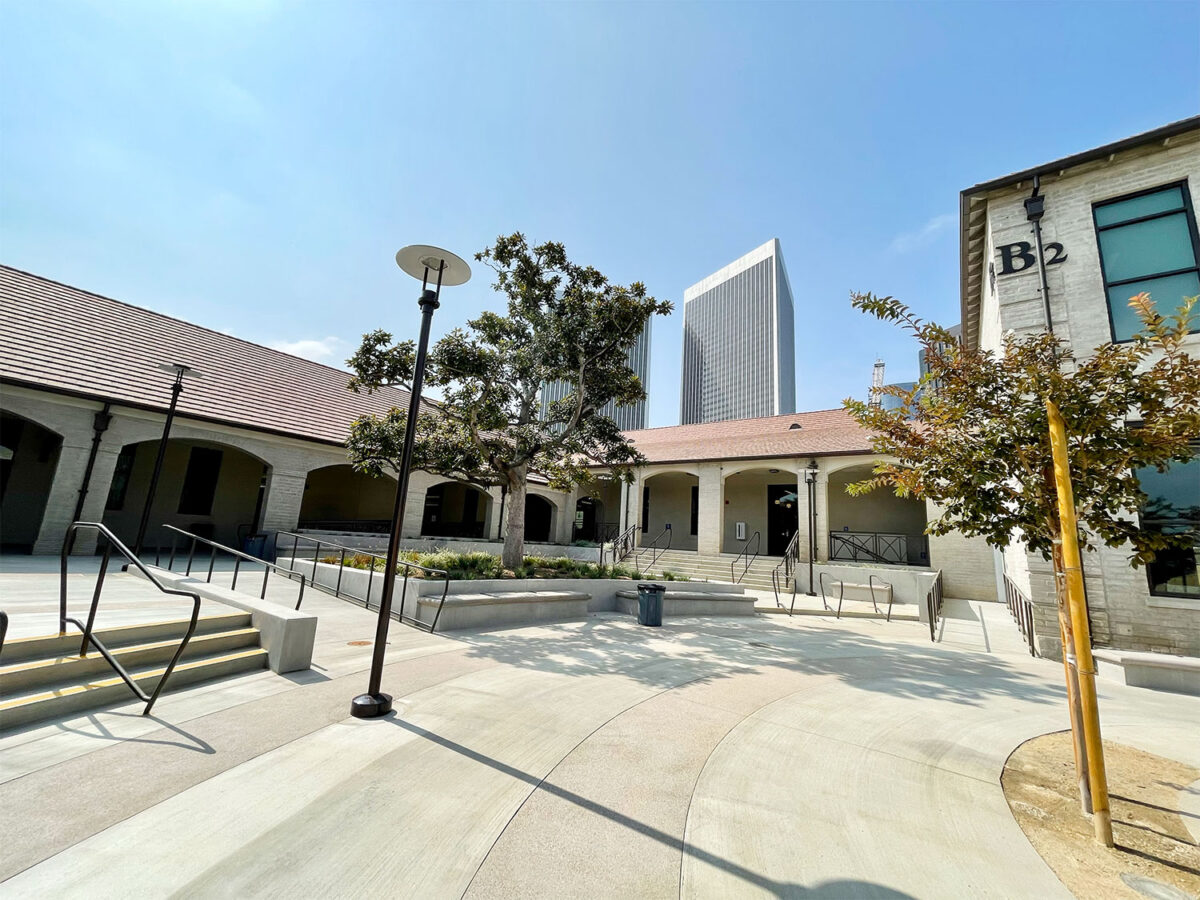The Beverly Hills Planning Commission reconvened for the second of three special meetings to discuss the One Beverly Hills project, the massive proposed residential and luxury hotel development that would reshape the city’s western gateway. The $2 billion development would combine three parcels of land and redevelop portions of the Beverly Hilton. At the previous meeting held on April 8, the Commission signaled unanimous approval of the project’s Final Supplemental Environmental Impact Report (EIR). The commissioners drilled down into the Overlay Specific Plan on April 19, with some voicing reservations over a proposed timeshare-style program and access to the property from the south.
At the previous meeting, the team managing the project and the project’s owners made a presentation to the Commission, highlighting the benefits they say One Beverly Hills will bring to the community. Beny Alagem, CEO of Alagem Capital Group which is developing the project along with Cain International, pointed to his stewardship of his other two luxury hotel holdings, the Beverly Hilton and Waldorf Astoria.
“We delivered with the Waldorf Astoria everything we promised and more. The financial return exceeded the city’s estimates,” Alagem told the Commission. He promised that One Beverly Hills would “perform on [an] exponentially higher level,” generating revenue for city services and schools and creating new jobs. “One Beverly Hills will be the catalyst that will help revive the city economy and support it in the future.”
At nearly 2 million square feet with a $2 billion price tag, the proposed development includes 340 residential units and 42 luxury hotel rooms spread out between seven major structures. It would also demolish and update portions of the Beverly Hilton, including the conference center, the Palm/Oasis Court Building, the parking lot on Merv Griffin Way, the hotel’s vehicle entry, and the Aqua Star Pool.
The project’s biggest selling point for both prospective residents, future guests, and the city is the 12.7 acres of open space, featuring 8 contiguous acres of gardens, about half of which would be publicly accessible. The plans boast two miles of walking paths dotted with art and water features. The project achieves this by creating a land bridge over Merv Griffin Way in order to connect the Hilton parcel with the Robinsons-May tract. The garden, made up of 40 species of trees and 250 plants, will be managed by a non-profit conservancy–an arrangement that also grants the development tax benefits.
The Planning Commission is in the midst of a series of public meetings for One Beverly Hills, at the end of which they will make recommendations to the City Council regarding the project. Final approval for the project rests with the Council. At the previous meeting on April 8, the Commission instructed staff to draft a resolution of support for the Final Supplemental EIR.
At the April 8 meeting, the commissioners went through a list of questions regarding the project’s Overlay Specific Plan, the comprehensive document that regulates land uses, development standards, and operational standards for the plan area. While the project managers did not have time to respond, the staff report for the April 19 meeting included answers to each of the commissioners’ questions from the One Beverly Hills Team.
Even with 50 pages of meticulous answers to their earlier questions, the Commissioners continued to pepper the project team with follow-ups on April 19. Commissioners expressed concerns about access to One Beverly Hills from South Beverly Hills. “For people who live in the south, there’s no way to get to the gardens without making a very, very long route around Santa Monica Boulevard and Wilshire and then either backtracking, or going up to Wilshire,” said Commissioner Myra Demeter, herself a resident of South Beverly Hills.
Demeter floated the ideas of constructing a bridge or a tunnel to connect the south with the development at a more convenient junction. The issue, according to Ted Kahn, President of the One Beverly Hills Project, is that the property adjacent to the project is privately owned, making it impossible to create a more accessible entry point. In response, Demeter suggested creating an easement on the property to allow for a crossway mid-block.
The Commission grappled with a proposed fractional ownership program detailed in the plan. The so-called Residence Club would make 37 fully furnished units available to owners for 30-day increments. The Specific Plan notes that “Residence Club units generate more spending than traditional condos” owing to the high-net-worth occupants and high turnover.
Commissioner Demeter felt that the program would undermine a sense of community among residents. “I’m not sure how you develop a sense of community if there are multiple owners coming and going for a property,” she said at the April 8 meeting.
Planning Commission Chair Peter Ostroff said that he felt the plans did not provide enough detail for a program that the city had never approved. He recommended removing the program from the Specific Plan until the project team could give more specifics.
“I’m not comfortable with the notion of, ‘This is really a good thing, there’s other cities doing it, so we should do it, too,'” Ostroff said. “We don’t know what the ‘it’ is, and we don’t know what all of the unforeseen issues might be.”
At the end of the 3-hour meeting, Ostroff flagged one last condition buried in the Specific Plan that would prohibit developers from hiring employees with felony records. “Is that a good thing to have? That seems kind of unfair,” Ostroff said.
Director of Community Development Ryan Gohlich explained that the provision is standard in the city and came about because of One Beverly Hills’ proximity to El Rodeo Elementary School. Ostroff opined that the rule felt “somewhat arbitrary,” and could unfairly penalize those who had already served their time. Vice Chair Lori Greene Gordon and Commissioner Andy Licht agreed that the Commission should throw out the stipulation.
“If somebody had a felony conviction when they were 18 and now they’re 48 and they’re turning their lives around, it just seemed somewhat unfair,” Ostroff said.







